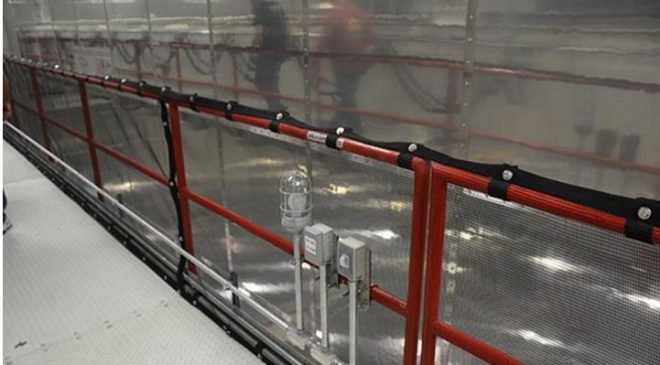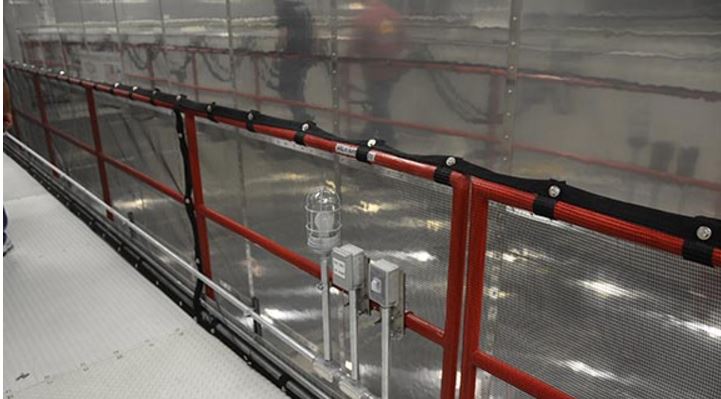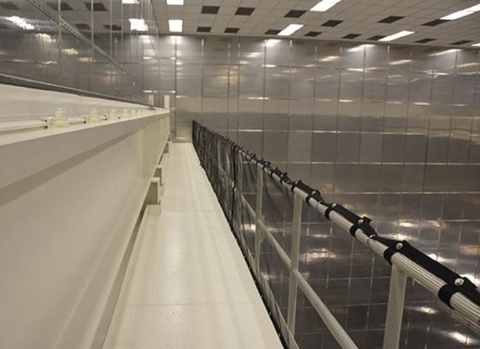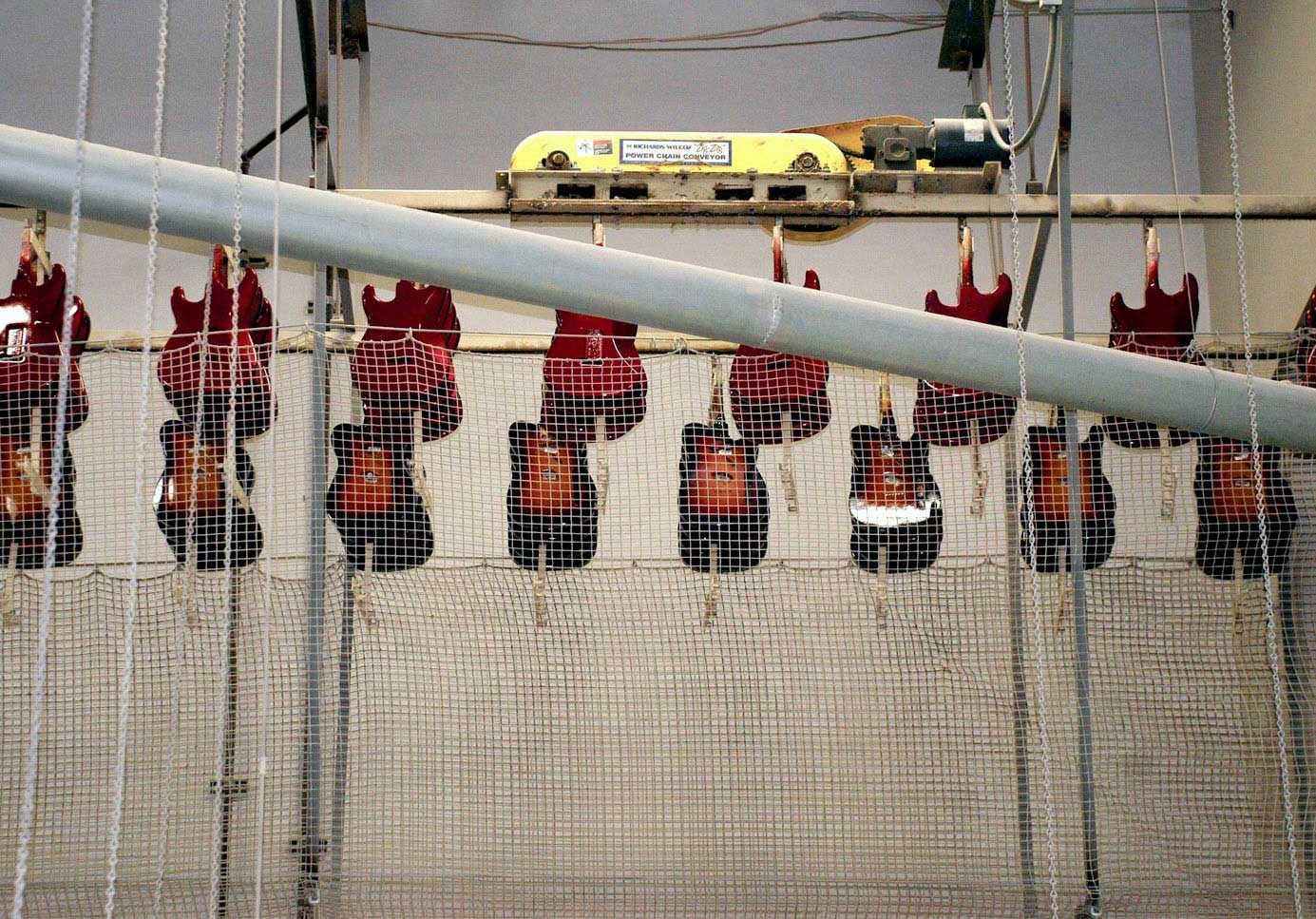
There is now more flexibility in safety rules for industrial walking-working surfaces thanks to OSHA’s recently released standards for General Industry Personal Fall Protection and Walking-Working Surfaces. The term “general industry” applies to just about everything outside of construction, agriculture and maritime industries. Warehousing & distribution, manufacturing, service centers and many other commercial enterprises fall under the new standardized rule.

Some of the safety standards have been informed by effective fall protection measures used at construction sites. One of the benefits of this new ruling is more consistency between construction standards and general industry standards, making compliance easier for companies that conduct business in both of these sectors. Such consistency in rules clearly affects most organizations with industrial facilities or physical plants.
Interpreting the Details
Prior to the new standards, generally acceptable options for personal fall protection systems were limited and in some cases unclear. This fact wasn’t lost on federal regulators. They’ve done a good job of addressing that issue in OSHA’s new rule which describes specific walking-working surface situations and the kinds of fall protection systems and devices that are permitted in each.
As summarized by the law firm Robinson + Cole, the new OSHA standards provide employers with “greater flexibility in fall protection by permitting selection from a variety of fall protection measures based on the circumstances.” This includes safety nets in many situations, which can save on the cost of constructing permanent restraining guards and barriers.
We believe that it would be helpful to share a list of the options employers may choose from as nicely summarized by Megan Baroni of Robinson + Cole:
- “Guardrail system: a barrier, such as a railing, placed along the edge of a walking-working surface, intended to prevent workers from falling.
- Safety net system: a netting system placed beneath the work area, intended to catch falling workers before they hit the ground or another lower level structure.
- Personal fall arrest system: a combination of equipment used on one’s person to arrest or stop a fall, such as a body harness, anchorage, and connector. Body belts may not be used as part of a personal fall arrest system.
- Positioning system: a supportive system of equipment used with a body belt or harness that allows one to work on an elevated vertical surface, such as a window, with both hands free.
- Travel restraint system: a combination of equipment used on one’s person, intended to prevent a worker from going over an unprotected edge of a walking-working surface.
- Ladder safety system: a system attached to a fixed ladder, intended to prevent workers from falling, typically comprised of a carrier, safety sleeve, lanyard, connectors, and body harness.”
The greater flexibility in personal fall protection measures allows owners and employers the ability to apply a safety solution that can best and most safely fit each situation.
 Protective netting is now permitted, and in some cases preferred, over guardrails, toeboards and certain kinds of safety harnesses in many types of elevated work areas. These areas could include low slope roofs, catwalks and, more generally, any unprotected sides of walking-working surfaces that are elevated 4 feet or more above a lower level. Wall openings are included except where the space is used for hoisting or where there is dangerous equipment below. OHSHA maintains that nets may not provide enough stopping distance in certain cases from dangerous equipment or moving apparatus under the work surface.
Protective netting is now permitted, and in some cases preferred, over guardrails, toeboards and certain kinds of safety harnesses in many types of elevated work areas. These areas could include low slope roofs, catwalks and, more generally, any unprotected sides of walking-working surfaces that are elevated 4 feet or more above a lower level. Wall openings are included except where the space is used for hoisting or where there is dangerous equipment below. OHSHA maintains that nets may not provide enough stopping distance in certain cases from dangerous equipment or moving apparatus under the work surface.
“Priceless” Safety Rule Improvements
The new OHSA rule on Walking-Working Surfaces Fall Protection became effective on January 17, 2017. Far from being arbitrary regulations for compliance, implementation of these new safety standards is estimated save 29 lives and prevent 5,842 workplace injuries every year! How can you measure the value of life, health and property saved, especially when adhering to the new rule adds no significant cost and may even offer less expensive, more effective safety solutions?
Our opinion on the new rule includes a kudos for getting it right and clarifying the standards. We also appreciate Robinson + Cole for publishing a succinct and informative article on their Manufacturing Law Blog.
If would like to speak with a netting specialist to find out what kinds of netting solutions might be suitable for your general industrial needs, click here or call 800-241-7330.








